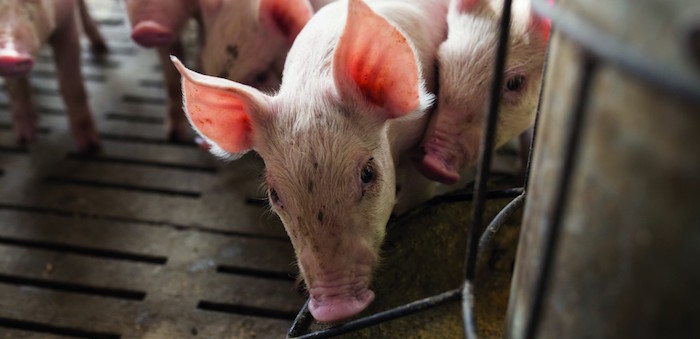Dr Phil Baynes has spent his career in pig welfare and nutrition. Based in Cheshire, he runs Baynes Nutrition and is a consultant nutritionist to Cargill
There are some major nutritional challenges facing pig producers this year. The first is March 29: the date – as it stood at the time of writing – that the UK leaves the EU. We could well see increased volatility in the commodities markets resulting from new, or a lack of, trading arrangements and impacts on exchange rates.
From a feed perspective, there is more than sufficient soya in the world this season, with a bumper crop harvested in the US and a record crop forecast in Brazil. We also need to consider a reduction in Chinese demand, the reasons for which are three-fold: a trade war with the US, a Chinese governmental edict for a reduction in protein in animal feed and the impact of ongoing health issues that reduce the number of pigs they have to feed.
As for cereals, the revision of global maize stocks by the USDA in November 2018 after the discovery of an additional 149 million tonnes in China, plus healthy wheat stocks, should influence prices in the UK.
The challenge is knowing where these feed ingredients are being held and their availability. China does not export any of its stocks. However, it held 67.5% of the world’s maize stocks, 53.8% of wheat stocks and 17.7% of soya stocks at the end of the 2018/19 season.
Another major challenge for pig producers is the new copper regulations that will come into force from February 13. It means a reduction in current copper levels in piglet rations up to 12 weeks of age. The new permitted levels are in two parts: 150g to four weeks post- weaning and then 100g to 12 weeks of age, dropping to 25g of copper in diets of all classes of pigs thereafter.
Copper is involved in critical metabolic processes, such as energy transfer, antioxidant activity and facilitating iron uptake, which when deficient, can lead to aberrant conditions, including bone abnormalities, impaired growth and a reduced ability to combat disease.
We need to support the growth potential of the modern pig genotype and think about which products we have at our disposal to provide the necessary nutrients.
Traditionally, we have been using salts of trace elements, such as copper sulphate, but with the changes in regulations and the subsequent reduction of copper in the final feed, we have to consider other products which have higher digestibility coefficients such as protein-bound trace elements. These will actually feature well in combination with their salts.
This will inevitably increase the cost of our vitamin and mineral packages, but if it improves (or at least maintains) pig performance, then it will be worth it.




